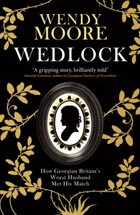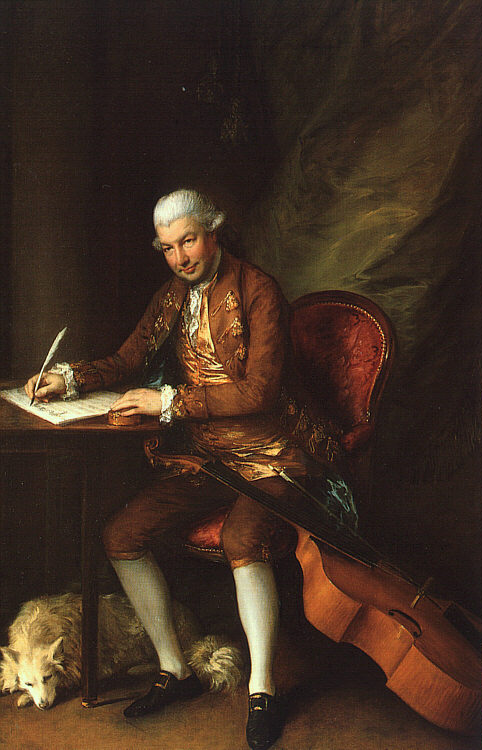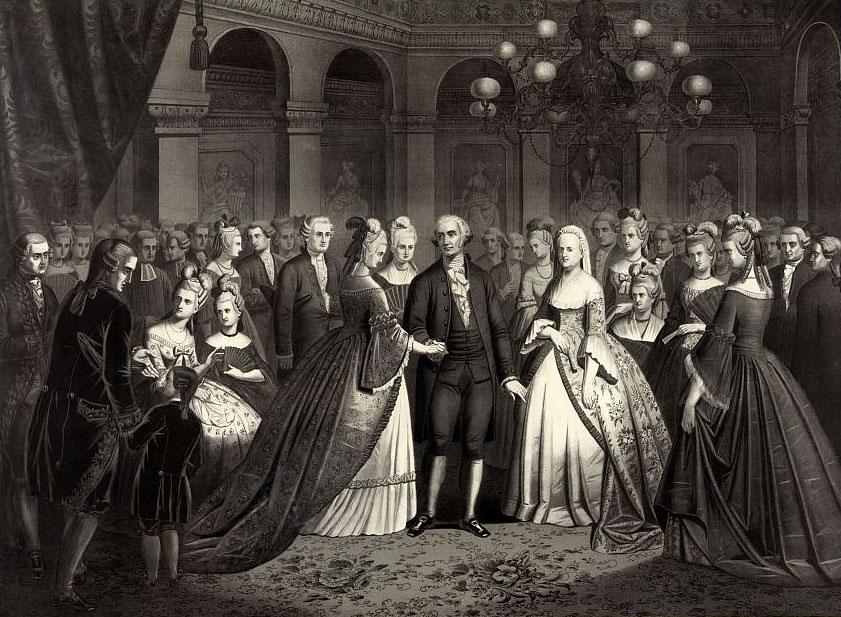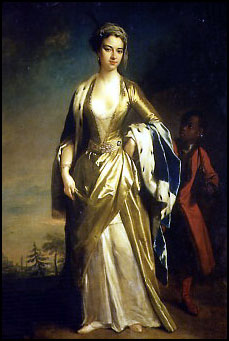
Henrietta Vernon was born in the most fortunate of circumstances. Not only was she an aristocrat (grand-daughter of the famous politician Thomas Wentworth) but she was a noted beauty. Therefore, it may come as no surprise that she was married very early in life. She met her future
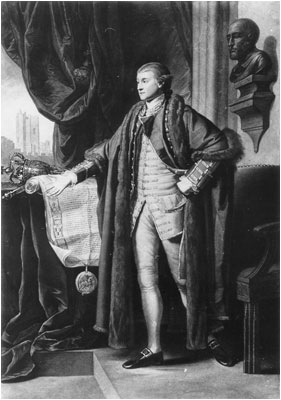 husband in one of the most cinematically romantic of ways, during a rainstorm. Richard Grosvenor, the 1st Baron Grovesnor captured the young girl's fancy despite the 14 year age gap between them. They married within a month of their initial meeting, in 1764.
husband in one of the most cinematically romantic of ways, during a rainstorm. Richard Grosvenor, the 1st Baron Grovesnor captured the young girl's fancy despite the 14 year age gap between them. They married within a month of their initial meeting, in 1764.Henrietta soon realized that her hast in marrying Richard had been a huge mistake. He was a huge gambler, even by 18th century standards. We're talking £250,000 in one night (more than a million today)! When he wasn't gaming away the couple's money he was out whoring in every brothel in London. Yuck! Imagine the diseases he brought back to his young bride. It was not long before Henrietta admitted to feeling "ill used." Do you blame her eye for wandering?
Henrietta's attention fell on the King's brother, Henry Duke of Cumberland who just happened
 to be the same age as her. Henry himself, already had a rebellious history, it was rumoured that he had married a commoner, Olivia Wilmot and there was to be more commoner marriages in his future as well. Henry was young and royalty; there was a dangerous appeal to having an affair with him. The couple would meet in secret in inns around the country. One time, while they were out at a friend's house in Cavendish Square Henrietta asked for a private meeting with the Duke to talk about her brother in the dining room. They were excused but after a half hour, the friend decided there had been enough talking and went in to interrupt. She found Henry on top of Lady Grosvenor, "with her petticoats up" on her couch. There is nothing I hate more than rude house guests! A crim con trial was soon underway.
to be the same age as her. Henry himself, already had a rebellious history, it was rumoured that he had married a commoner, Olivia Wilmot and there was to be more commoner marriages in his future as well. Henry was young and royalty; there was a dangerous appeal to having an affair with him. The couple would meet in secret in inns around the country. One time, while they were out at a friend's house in Cavendish Square Henrietta asked for a private meeting with the Duke to talk about her brother in the dining room. They were excused but after a half hour, the friend decided there had been enough talking and went in to interrupt. She found Henry on top of Lady Grosvenor, "with her petticoats up" on her couch. There is nothing I hate more than rude house guests! A crim con trial was soon underway.As with just about every other crim con trial, this was the talk of the town, especially since it involved royalty. Henrietta, was outraged at her husband's hypocracy. She slept with one man and was to be damned for all time while her husband constantly frequented brothels. She went to bawdy houses in search of witnesses to testify upon Richard's many infidelities. But this was not to aid her defense. Henrietta and Henry's dirty letters to each other was enough to award Richard damages of £10,000. After a mere seven years of marriage, Henrietta and Richard were seperated in 1771.
Now Henrietta was an outcast with a mean £1,200 allowance. But rather than wallow in the sorrow of her situation she made the best of it, and became friends with other social outcasts. Soon she was seen at the Pantheon arm in arm with Lady Worsley. The papers would follow her, in hopes of catching her in a scandalous act with a rake. Once they reported that she showed up to the opera with a different man every night. Well, can you blame her? With such a small allowance, Henrietta needed rich men to support her elegant lifestyle.
In 1802 Richard finally kicked the bucket. Relieving Henrietta of her marriage limbo. A month later Henrietta was no longer Lady Grosvenor. She married Lt.-Gen. George de Hochepied, 6th Baron de Hochepied and retired to a quiet life with him until her death in 1828. Her second husband followed, two months later.















